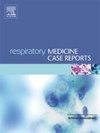外源性脂质性肺炎的全肺灌洗
IF 0.7
Q4 RESPIRATORY SYSTEM
引用次数: 0
摘要
脂质肺炎由肺内脂质沉积引起,可由外源性或内源性引起。外源性类脂性肺炎发生于吸入或使用油基产品,如矿物油或鼻外敷。除了去除致病因子,成人的治疗选择是有限的。皮质类固醇可能提供缓解,但难治性病例需要替代疗法。全肺灌洗在部分儿童和成人病例中显示出良好的前景。我们报告一例类固醇难治性外源性脂质肺炎成功治疗全肺灌洗。患者56岁,非吸烟者,冠状动脉疾病合并复发性肺炎,前一年感染COVID-19后出现3个月发热、体重减轻、盗汗和呼吸困难。影像学显示多灶磨玻璃混浊和胸腔积液,感染检查阴性。尽管皮质类固醇治疗,症状复发,导致多次急诊就诊。支气管镜活检证实外源性脂质肺炎,归因于长期使用矿物油治疗便秘。尽管停止矿物油和延长类固醇疗程,他的病情恶化。支气管肺泡灌洗显示含脂巨噬细胞59%。多学科团队建议全肺灌洗。患者在左肺上进行了手术,第二天成功拔管,术后4天出院。外源性类脂性肺炎通常通过停用药物和皮质类固醇治疗,但对于类固醇难治性病例尚无标准治疗方法。全肺灌洗为改善症状和影像学提供了潜在的选择。本病例强调了全肺灌洗在严重的类固醇抵抗性外源性脂质肺炎中的新作用。本文章由计算机程序翻译,如有差异,请以英文原文为准。
Whole lung lavage in the setting of exogenous lipoid pneumonia
Introduction
Lipoid pneumonia results from lipid deposition in the lungs, arising either exogenously or endogenously. Exogenous lipoid pneumonia occurs from aspiration or use of oil-based products such as mineral oil or nasal topicals. Beyond removing the offending agent, treatment options in adults are limited. Corticosteroids may provide relief, but refractory cases necessitate alternative therapies. Whole lung lavage has shown promise in select pediatric and adult cases. We report a case of steroid-refractory exogenous lipoid pneumonia successfully treated with whole lung lavage.
Case presentation
A 56-year-old non-smoker with coronary artery disease and recurrent pneumonia presented with 3 months of fever, weight loss, night sweats, and dyspnea following COVID-19 infection the previous year. Imaging revealed multifocal ground-glass opacities and pleural effusions, with negative infectious workup. Despite corticosteroid treatment, symptoms recurred, leading to multiple Emergency Department visits. Biopsy via bronchoscopy confirmed exogenous lipoid pneumonia, attributed to chronic mineral oil use for constipation. Despite cessation of mineral oil and prolonged steroid courses, his condition worsened. Bronchoalveolar lavage revealed 59 % lipid-laden macrophages. A multidisciplinary team recommended whole lung lavage. The patient underwent the procedure on the left lung, was successfully extubated the following day, and discharged 4 days post-procedure.
Discussion
Exogenous lipoid pneumonia is typically managed by stopping the offending agent and corticosteroids, but no standard treatment exists for steroid-refractory cases. Whole lung lavage offers a potential option for symptomatic and imaging improvement. This case underscores the emerging role of whole lung lavage in severe, steroid-resistant exogenous lipoid pneumonia.
求助全文
通过发布文献求助,成功后即可免费获取论文全文。
去求助
来源期刊

Respiratory Medicine Case Reports
RESPIRATORY SYSTEM-
CiteScore
2.10
自引率
0.00%
发文量
213
审稿时长
87 days
 求助内容:
求助内容: 应助结果提醒方式:
应助结果提醒方式:


